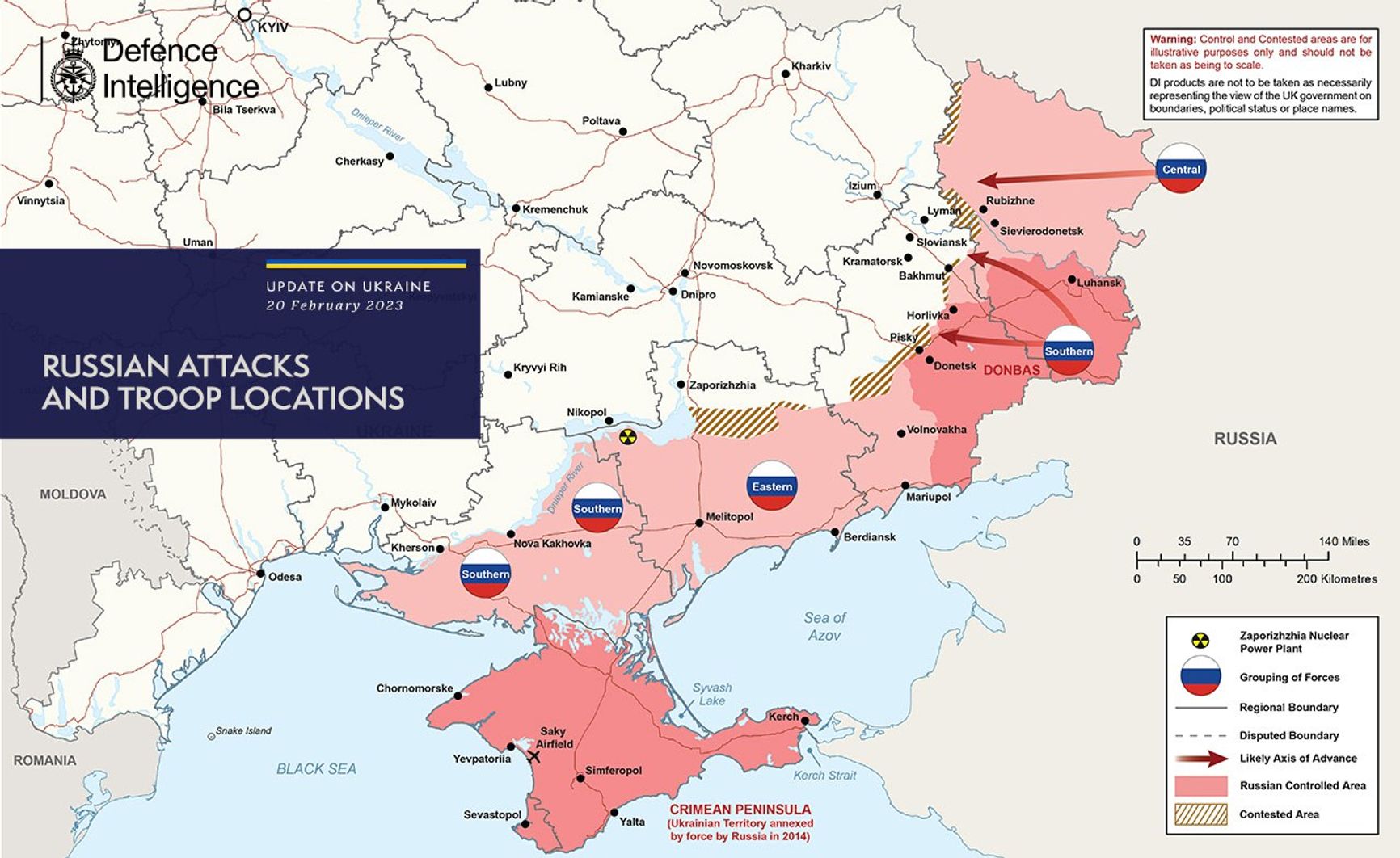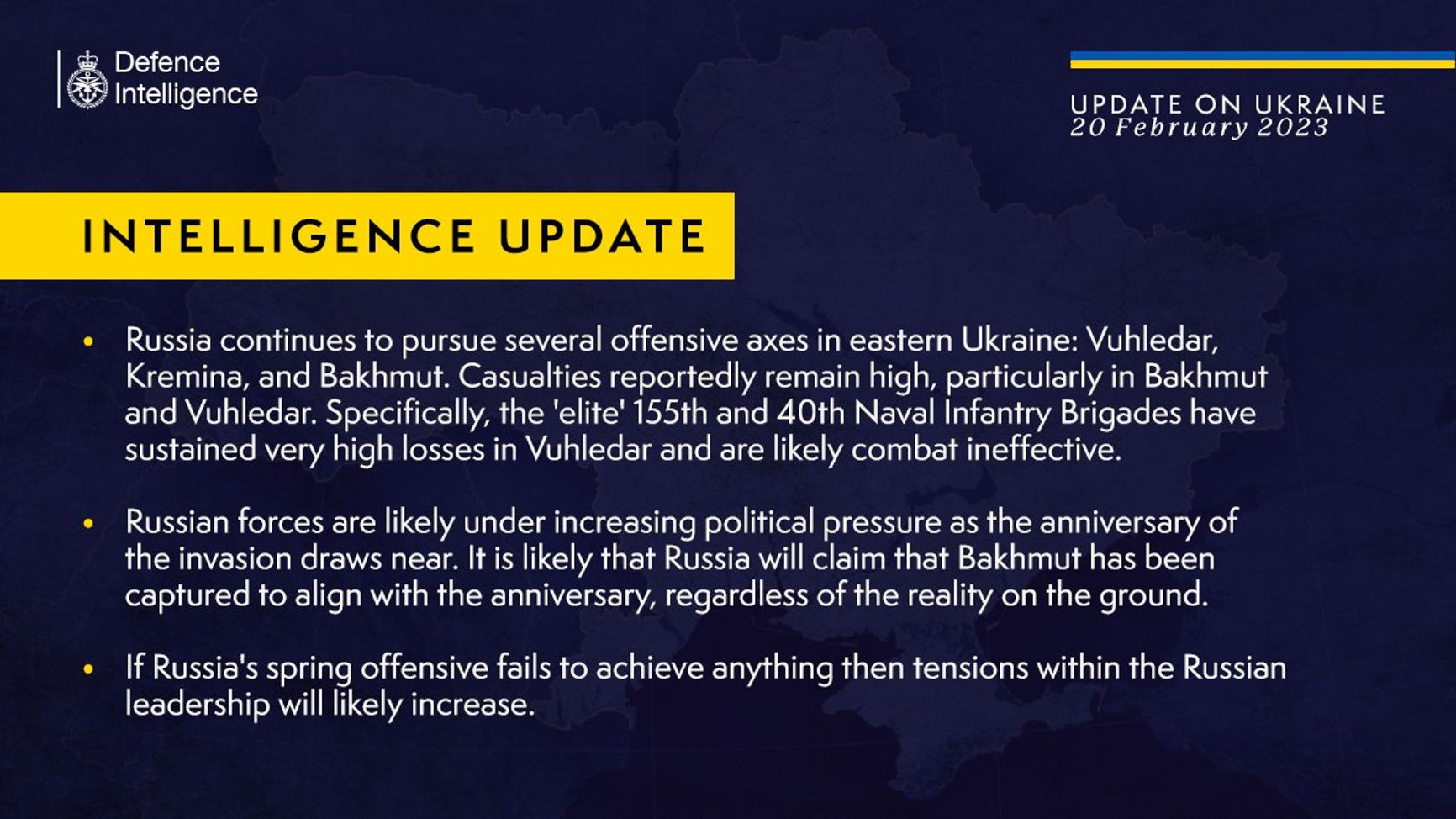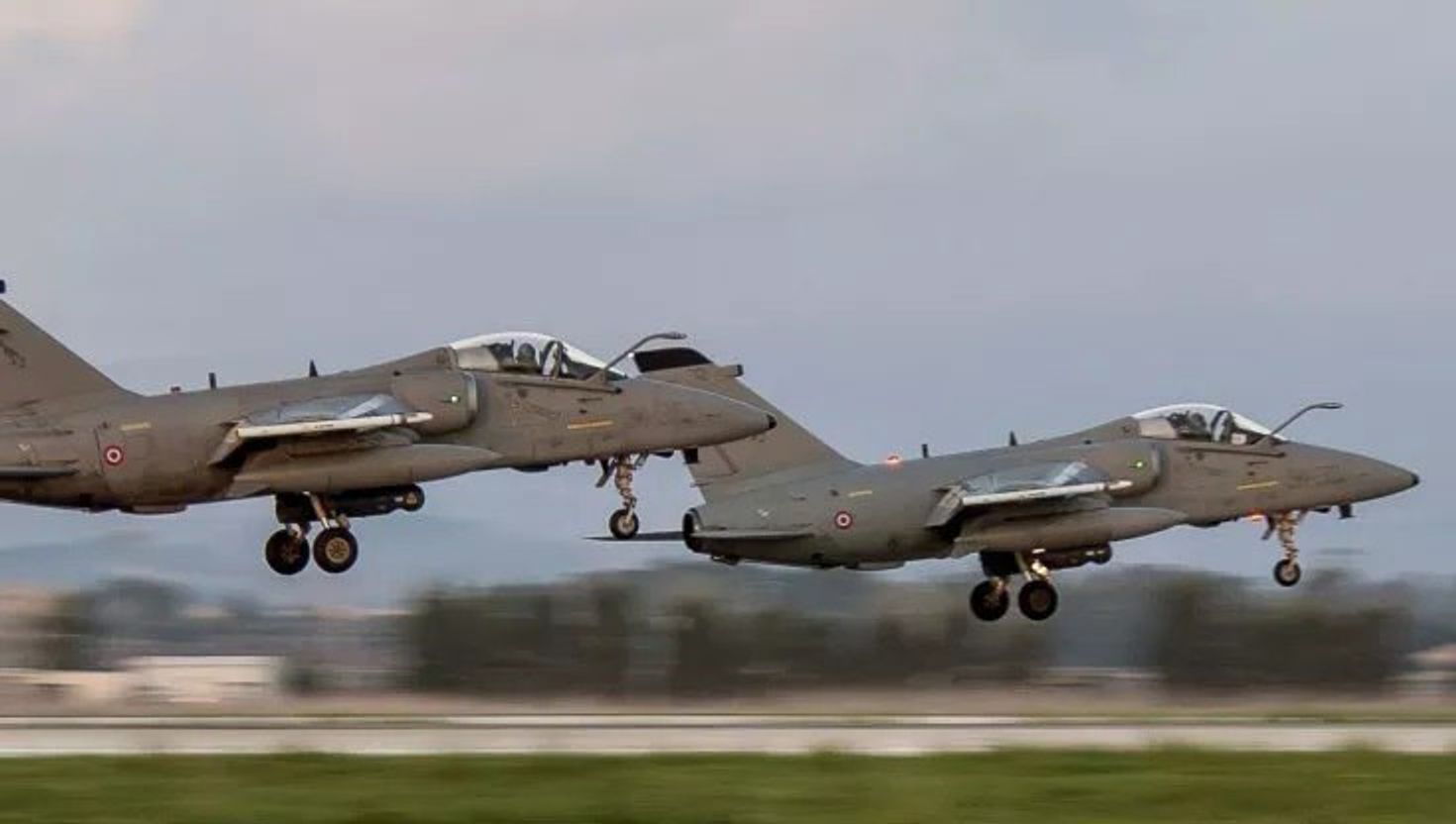
The front line
Russian forces continue to conduct offensive operations in eastern Ukraine, but the Ukrainian army is repelling these attacks, with the Russian military not making any noticeable progress. Russia's main efforts are concentrated in the Bakhmut, Avdiivka, Kupiansk, Lyman and Shakhtar directions.

The Russian army is also under great political pressure, as the Kremlin leadership seeks to demonstrate some sort of progress on the anniversary of the start of the full-scale invasion, according to an intelligence update by the British Defense Ministry. The Russians are suffering heavy losses in the process, especially at Bakhmut and Vuhledar.
“Specifically, the ‘elite’ 155th and 40th Naval Infantry Brigades have sustained very high losses in Vuhledar and are likely combat ineffective,” noted British military intelligence in an update. It is likely that Russia will declare Bakhmut captured regardless of the reality on the ground, the review adds.

American military analyst Michael Kofman writes that the large-scale Russian offensive, which has been talked about for several weeks now, has so far made little progress. According to Kofman, this is linked to “poor force quality, loss of junior officers, ammunition, and equipment constraints.”
Russia is attacking from 5-6 axes in the Donbas instead of a major push in one direction. Kofman says that the battle for Vuhledar “has not gone well” due to heavy losses. The expert also noted that the area outside Vuhledar is “very open, heavily mined, and covered by Ukrainian ATGM [anti-tank guided missile] teams,” leaving the Russian army few options for an assault.
In a conversation with The Insider, Israeli military expert David Gendelman noted that there were two potential offensive scenarios for Russia’s General Staff:
“The first option is to continue throwing forces into already active areas in Donbass with the expectation of further slow «gnawing» in these areas. The second option is to swing at a more strategic and decisive move in the form of a large offensive from the north or south, creating a threat to encircle the entire eastern grouping of the AFU, creating a threat to Kyiv, Kharkiv, Zaporizhia, etc. But given the shortage of weapons and military equipment, this option borders on a gamble, and the chances of success are very slim. Therefore, although there is some probability that they will still undertake this adventure, in a purely military and technical sense it would be much safer and more reliable for Russians to choose the first option.”
Russia continues to “turn Zaporizhzhia NPP into a military base”
600 mobilized Russian soldiers have arrived at the Zaporizhzhia nuclear power plant (ZNPP), according to a report by Ukraine's state-owned nuclear energy operator Enerhoatom. The agendcy noted that Russia continues “to turn the ZNPP into a military base.”
“They [Russia] have set up a machine-gun position on the roof of Unit 5,” the report said. A video of Russian multiple-launch rocket systems (MLRS) operating from the ZNPP was made available to The Insider in September. The footage shows multiple rocket launchers in close proximity to the power unit.
Joe Biden in Ukraine
US President Joe Biden visited Ukraine for the first time since the war began, where he met with Ukrainian President Volodymyr Zelensky. During his visit to Kyiv, Biden announced a new $460 million package of US military aid to Ukraine. The total amount of US military aid allocated to Kyiv since the start of the war now amounts close to $29.8 billion.
As part of the aid package, Ukraine will receive the following military assistance from the US Department of Defense, according to a press release issued by the agency:
- An unnamed additional number of high-precision GMLRS guided missiles for HIMARS missile systems;
- An unnamed number of additional 155mm artillery rounds;
- An unnamed number of additional 120mm mortar rounds;
- Four air surveillance radars;
- An unnamed number of additional Javelin anti-tank missile systems;
- Approximately 2,000 anti-armor rockets;
- Four Bradley Fire Support Team (BFIST, apparently M7A2) armored forward artillery observation and forward air support vehicles;
- Two tactical vehicles to recover equipment;
- Claymore anti-personnel munitions;
- Demolition munitions;
- Night vision devices;
- Tactical secure communications systems;
- Medical supplies;
- Spare parts and other field equipment.
Zelensky called the talks with Biden “very important.” According to him, they bring Ukraine closer to victory. “The democratic world will win this historic battle. Ukraine will win,” Zelensky wrote.
Arms supplies
The Italian government is considering the possibility of transferring five AMH light fighter-attack aircraft to Ukraine, with the Italian Air Force planning to retire the planes for good by the end of the year, according to a report by Italian newspaper La Repubblica. The possibility of transferring Panavia Tornado fighter-bombers is also being considered. However, the supply of the planes will be possible only on the condition that Italy will not be the first country to supply Kyiv with Western-made fighters.

On February 18, during a speech at the Munich Security Conference, Polish Prime Minister Mateusz Morawiecki said that Poland was ready to supply Ukraine with MiG-29 fighters in alliance with other NATO countries.
Bodies on “Putin's planes”
Planes from the “Russia” (“Rossiya”) special flight unit, which is part of the presidential administration and is engaged in the transportation of top Russian officials, were used to carry the bodies of Russian troops killed in the war, reported The Moscow Times. In 2016, President Vladimir Putin traveled on one of these planes while on a visit to Yoshkar-Ola.
The publication used flight-tracking service FlightRadar to analyze the routes of the special unit's planes in late January and early February, and found that after their arrivals in Russian regions, reports appeared about the funerals of fallen soldiers.
In early February, a video shot in Tatarstan appeared on social media, showing 11 coffins with the bodies of those killed in Ukraine being offloaded from trucks. The men in the video say that they are to be transported to villages in Tatarstan and Bashkortostan. The surname and initials Yangibayev A.A. can be clearly made out on one of the coffins, and there are reports of the recent funeral of a man with that name – Artur Yangibayev was buried in Tatarstan’s Zainsk on January 31. One week earlier, on January 25, a Yak-40 of the “Rossiya” squadron, with tail number RA-87972, landed in Nizhnekamsk, an hour’s drive away.
Six servicemen were buried in the Orenburg and Chelyabinsk regions from February 8 to 12. Another Rossiya airplane, tail number RA-61712, flew to Orenburg and then to Chelyabinsk in the same timeframe.

Another aircraft, an An-148-100EA with tail number RA-61720, flew to Yekaterinburg on January 23, after which two people – a Russian army serviceman and a member of the Wagner PMC – were buried in the region on January 23 and 24. On January 26, RA-61720 flew to Arkhangelsk and then to Cherepovets. A few days later, at least three people were buried in these regions – reports about the burials were published on local media. Two weeks before those burials took place, on January 13, the plane flew from Moscow to Ufa and back – on that day, Vladimir Putin visited the capital of Bashkortostan.